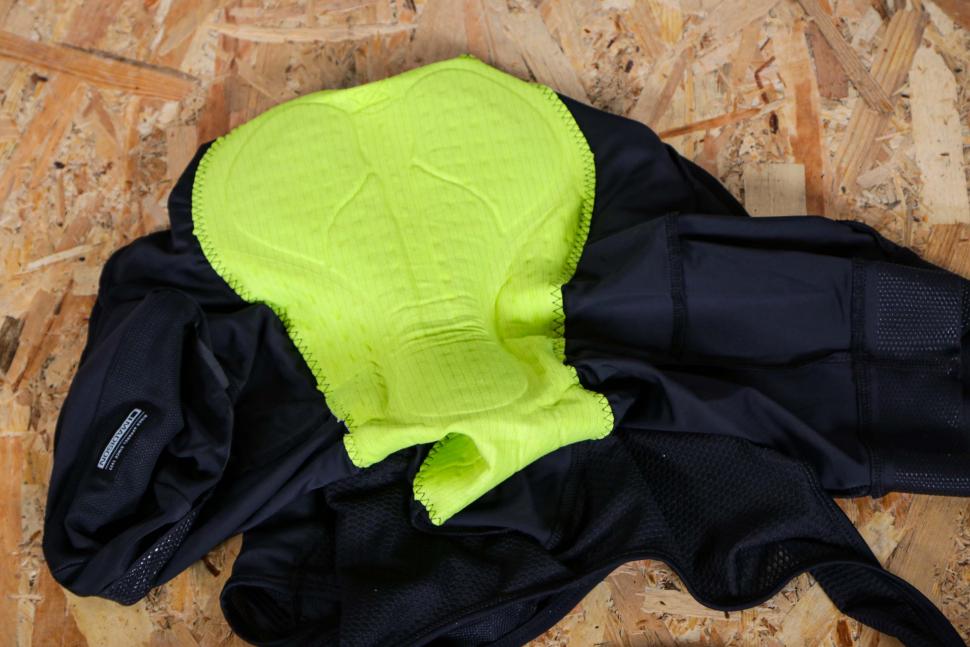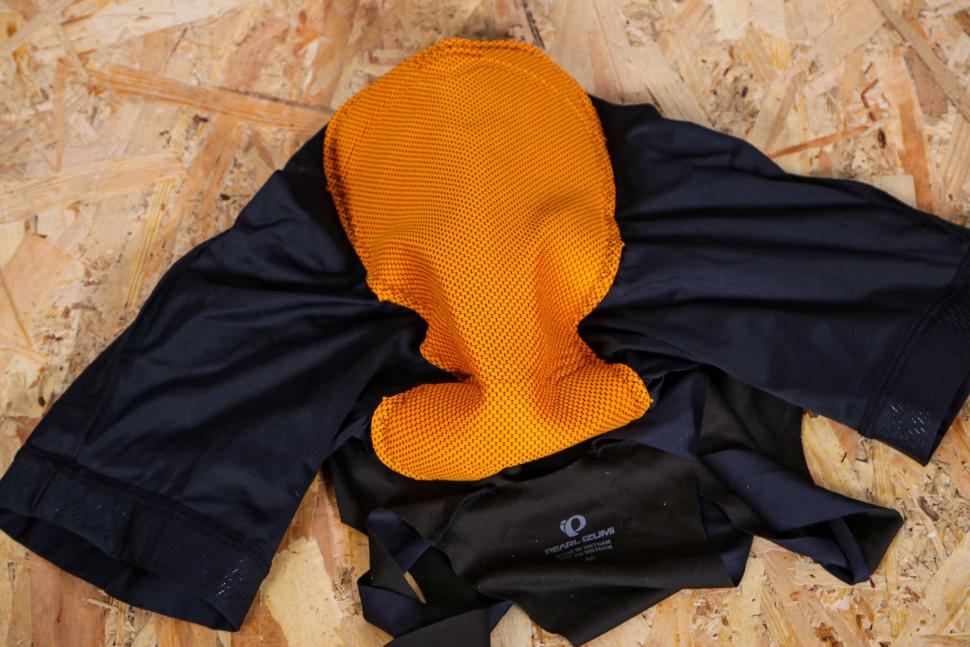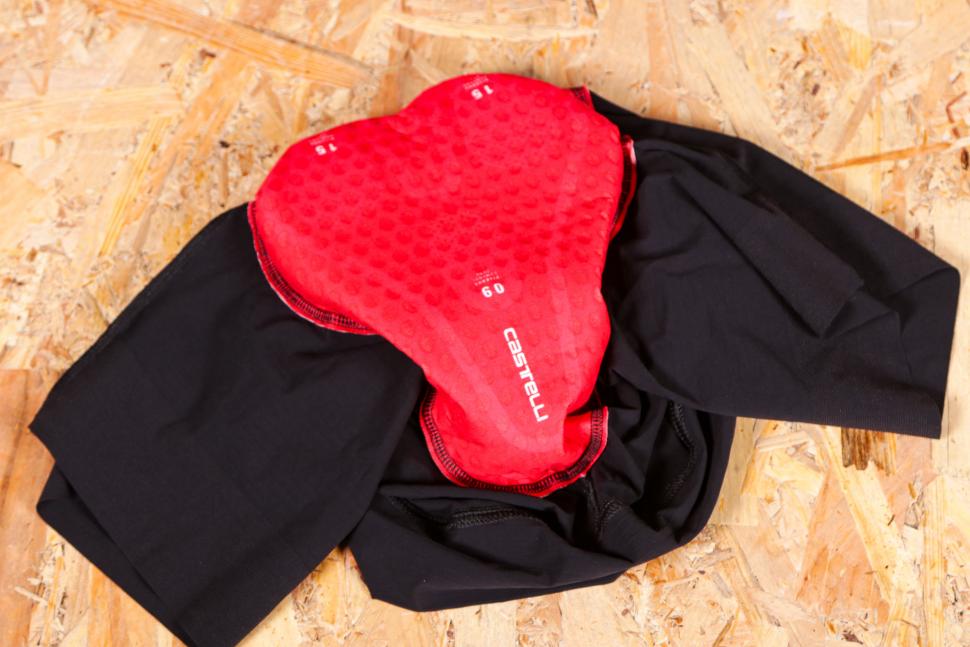- News
- Reviews
- Bikes
- Accessories
- Accessories - misc
- Computer mounts
- Bags
- Bar ends
- Bike bags & cases
- Bottle cages
- Bottles
- Cameras
- Car racks
- Child seats
- Computers
- Glasses
- GPS units
- Helmets
- Lights - front
- Lights - rear
- Lights - sets
- Locks
- Mirrors
- Mudguards
- Racks
- Pumps & CO2 inflators
- Puncture kits
- Reflectives
- Smart watches
- Stands and racks
- Trailers
- Clothing
- Components
- Bar tape & grips
- Bottom brackets
- Brake & gear cables
- Brake & STI levers
- Brake pads & spares
- Brakes
- Cassettes & freewheels
- Chains
- Chainsets & chainrings
- Derailleurs - front
- Derailleurs - rear
- Forks
- Gear levers & shifters
- Groupsets
- Handlebars & extensions
- Headsets
- Hubs
- Inner tubes
- Pedals
- Quick releases & skewers
- Saddles
- Seatposts
- Stems
- Wheels
- Tyres
- Health, fitness and nutrition
- Tools and workshop
- Miscellaneous
- Cross country mountain bikes
- Tubeless valves
- Buyers Guides
- Features
- Forum
- Recommends
- Podcast
feature
When should you get new cycling shorts to replace your old ones?
When should you replace your cycling shorts? They have a difficult life, stretching and flexing constantly as you pedal, putting up with friction and abrasion from the saddle, dealing with sweat, coping with repeated washing and all the while trying to keep you comfortable as you get the miles in. With such a tough job to do, your shorts can’t last for ever, so when exactly should you retire them? We asked the experts.
dhb’s senior product manager Rich Land says that it’s difficult to come up with the number of hours that a pair of shorts should last, or a given mileage, because all of these factors have an influence:
• Fabric
• Type of thread used to make the garment
• Pad
• Leg grippers
• Saddle used (stitching, material and shape)
• Contact with abrasives (Velcro on a saddlebag, for example, or grit coming from the surface)
• Washing powder/liquid
• Washing cycle
• How the product is dried
“Something like our Aeron Bib Short will typically have a lifespan of many years because all of the component parts have been carefully and considerately selected by our team, and it is well made,” says Rich.
“The fabric comes from a highly respected Italian mill, the pad is from Elastic Interface and we use a fantastic partner factory to make them. Other bib shorts will have their own longevity based on how the component parts have been selected, and how they have been put together.”
Let’s have a look at some of the key considerations.
The fabric
One major factor is the fabric.
“The elastane yarn (Lycra and Spandex are branded elastane yarns) is the most vulnerable within the fabric and components which make up a shorts,” says Rapha’s Graeme Raeburn.
“The elastane gives the fabric its stretch and 'power', keeping the shorts feeling compressive, supportive and ensuring it doesn't go see through. Although we spec a specific version for sport, the conditions it's used in are very aggressive to the elastane yarn. Sweat, sunlight, abrasion, road spray, frequent washing and repeated stretch cycles means it's usually the first to show signs of deterioration.
“As the yarn looses its elasticity and return, the fabric will also start to feel looser, less stretchy. You can often see the elastane turning lighter, before finally breaking and showing as a loose white yarn on the fabric surface. The looseness in the knit will cause the fabric to have show-through. It’s definitely time to replace if this happens!”
If you’ve ever sat behind someone whose shorts are past their best, you’ll know what Graeme means. It’s not a pretty sight and you need to have a quiet word.
“Ensuring you have the correct fit will help extend the lifespan of your shorts; too tight and the yarns will be overstretched, too loose and they will be subjected to more rubbing and creasing,” says Graeme. “You should also follow laundering and care instructions correctly (don't use biological detergents, the bio enzymes decay the elastane), have a good bike fit and use the correct saddle.”
Leg grippers can also lose their elasticity over time, and if they stop doing their job you should probably treat yourself to a new pair of shorts.
The pad
We went to Italian specialists EIT-Elastic Interface to find out about the seatpad.
“You should replace your shorts when they are no longer adherent to the body, because then the pad does not follow the body movements of the cyclist,” says marketing manager Guido Zago. “In fact, it begins to move forward or backward, and so the protection is missing, or worse, it starts to annoy the cyclist because it is unstable. The difference is made by the quality of the fabrics and materials used by the apparel manufacturer.”
What about the pad itself? Does it have a particular shelf-life beyond which it ceases to do its job?
“The materials from which our pads are made do not have an expiry date,” says Guido. “They are certified materials http://www.elasticinterface.com/certifications/ and the whole product is certified.
“We must not think of the foams of the pads as the foams that we see in the pillows of the house, even if the material is called polyurethane. There are many types of polyurethane with different characteristics that make its quality. Of course, I can only guarantee Elastic Interface products!”
You should, though, keep an eye on the pad because it can show a drop off in performance after extended use, with a reduction in depth or uneven compression.
“Check the chamois,” cycle-clothing brand Santini says. “When it seems it has changed in shape and become either more rigid/stiff or thinner, then it is time to change your shorts.”
Fellow Italian brand Alé says the same thing: “When the pad loses its thickness/density due to extensive use and cannot protect you anymore, it's time to change the garment.”
Washing
Should you wash your shorts after every single ride, no matter how short? According to the people who make your shorts, the answer to that one is straightforward: yes.
“The combination of warmth, moisture and nourishment (dead skin cells) makes bibshorts perfect for bacterial growth,” says Graeme Raeburn. “Although our pads are treated with an antibacterial treatment, there are many infection risks when combined with potential for dermal abrasion from cycling. Using clean bibs every ride will reduce the risk of irritating the skin, blocking pores, and infection.
“Additionally, sweat and road spray will deteriorate the fabric and pad if not washed out of he fabric after use, and I haven't even mentioned the possibility of an unpleasant smell!”
EIT-Elastic Interface’s Guido Zago agrees.
“The shorts must be washed after every ride, and possibly within a short time because sweat is the enemy of the textiles. Of course, the bacteriostatic treatment that we apply to our pads limits the proliferation of bacteria but the shorts must always be washed.
“Fundamental is also the fact that the cyclist must respect the washing instructions given by the manufacturer – for the same reason that if you have the most beautiful and functional bike in the world, but if do not do any maintenance, that will shorten its life.”
dhb’s Rich Land suggests using a non-bio detergent.
“If your wash load is full of sports kit you might be able to use a little less than normal because the fabrics are much lighter than standard day clothes,” says Rich.
“Don’t use softeners or conditions and wash your shorts inside out because the pad will come in more contact with the detergent that way.
“If you’re popping your shorts in with any garments that have Velcro on them I’d suggest buying a wash bag. You can decide whether the Velcro bits go in there or the non-Velcro. That way you’ll avoid snagging the fabric.
“One final tip is to turn down the spin cycle. Spinning can be an abrasive process on delicate fabrics, and as most jerseys are polyester based and shorts use a mix of fabrics designed to wick sweat away, the dry time post wash is typically low.”
What if you commute to and from work by bike? You’re unlikely to want to carry a second kit for the ride home. The best advice is to air your shorts between the two rides by putting them on a hanger rather than leaving them to fester in a bag or locker while damp – conditions in which bacteria can thrive and fabrics can get damaged.
Cafe wisdom: Your thoughts on bib shorts
In the previous version of this article, we had some useful comments from you about cycling short longevity, and some stories about old faithful shorts that have lasted some readers for many years. Here are three highlights...
Martyn_K said:
"Being the owner of about 12 pairs of decent bib shorts i tend not to 'replace' but merely 'add.' Handy when going away for 8 days of cycling as i can have a clean pair each day!"
D-Squared said:
"I’ve got an over 20 year old pair in Banesto team colours. Strictly for playing out Big Mig fantasies on the trainer in the privacy of my own home."
jlebrech said:
"You don't [replace your shorts], they become your washday pair. You wash the better condition pairs and suffer that old crappy pair that day."
Mat has been in cycling media since 1996, on titles including BikeRadar, Total Bike, Total Mountain Bike, What Mountain Bike and Mountain Biking UK, and he has been editor of 220 Triathlon and Cycling Plus. Mat has been road.cc technical editor for over a decade, testing bikes, fettling the latest kit, and trying out the most up-to-the-minute clothing. He has won his category in Ironman UK 70.3 and finished on the podium in both marathons he has run. Mat is a Cambridge graduate who did a post-grad in magazine journalism, and he is a winner of the Cycling Media Award for Specialist Online Writer. Now over 50, he's riding road and gravel bikes most days for fun and fitness rather than training for competitions.
Latest Comments
- Johnny Rags 1 hour 35 min ago
It would be nice if there were more lights on the market which mounted somewhere other than on the seatpost. Not all of us have half a yard of...
- Bungle_52 2 hours 44 min ago
This was a failure to give way at a roundabout so although it was relatively straightforward to anticipate and avoid there is traffic law to...
- chrisonabike 2 hours 52 min ago
Ah - I have now read Wikipedia on loons, and perhaps I can understand their objections:...
- wtjs 4 hours 4 min ago
she questioned what Police Scotland is doing to "deter dangerous driving and protect cyclists"...
- wtjs 4 hours 14 min ago
I've got a few reports coming up to one year where I've been told that they will take action but I don't know what action yet. I'll let you know...
- chrisonabike 4 hours 27 min ago
I feel Flintshire Lad's response - "A LABOUR councillor (candidate)!"...
- Sredlums 6 hours 6 min ago
Haha, that my pet peeve....
- stonojnr 6 hours 46 min ago
I'm not sure the UCI worlds are on the protected sports list, as surely CX & MTB would be shown too, the Beeb probably just acquire it as part...
- bikeman01 7 hours 27 min ago
Re-deployed on Twitter duty?









Add new comment
15 comments
Wash them you say?
I think I will stick to the only sure method of cleansing.
I think I'll stick to my methods, they seem to have worked over the decades
I think I'll stick to my methods, they seem to have worked over the decades
Quite right too! And I'll stick to mine, which have worked over what are probably more decades
As the owner of (too?) many bib shorts I think the advice in the article is excellent. I only wear mine for one ride (even a 40 minute one) before washing them. The other important thing is open air drying which definitely seems to kill off bacteria.
I only wear mine for one ride (even a 40 minute one) before washing them
Or, alternatively, ignore this implicit mollycoddling advice and wear them (whether bib type or not) lots of times between washing and it will be OK- especially on multi-day routes when you're wearing the shorts continually for 8 or more hours per day. Avoid wearing them in the sleeping bag overnight or candidiasis (thrush) will be more likely- although this risk is mitigated by washing the obvious areas in streams when you can and when it's hot. This problem does not seem to occur when it's cold.
I'm not sure that suggesting you might want to wash an item of clothing that is jammed up against your sweaty bare arse for hours at a time really counts as "mollycoddling", even in Lancashire.
When I were a lad, I'd dream of being able to wash a bit of clothing. On wash days we used to stand by side o'road and wait for rich car drivers to splash thr'puddles. Of course, we couldn't afford our own puddles back then.
But if you tell that to the youth of today, they don't believe you...
I think it's OK if you wash shorts and skin in a cold stream - otherwsie mollycoddling
this is extreme, if I cycle to work I am not going to carry a second pair of shorts for the journey home.
If I keep my shorts on all day at my desk is that better or worse than taking them off and then putting (horror) dirty shorts back on?
but in case you think I should can you clarify the following?
If I ride for 12 hours (one ride), how many times should I change shorts on the ride?
If I only need new shorts every time I take them off, does this also apply to going to the loo?
How is taking short soff to empty bladder/bowels and then putting them on again different from taking the off for work then putting them on again ?
Now that would be mollycoddling.
Let's be honest - its a lot simple then this. There are two main triggers to get a fresh pair of bib shorts :
1) Hygiene. The liner can't get clean anymore
2) The leg grippers or waistband goes.
When should you replace your shorts?
When no one wants you to ride on the front because it's too traumatic.
Were any of my children to approach me with such a facile question I would cut them from my will. What next, when should I wipe my arse?
Quite right, I did just that only last year, and I must admit I feel safer already.